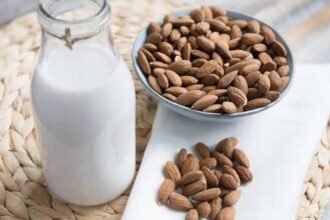Arroz con leche is one of the most beloved and ubiquitous desserts across Latin America. However, while the basic concept of rice pudding remains consistent, every region puts its own spin on this classic comfort food.
From differences in key ingredients to unique cooking methods, arroz con leche takes on delightful local nuances. Let’s explore some of the many variations that give this dish boundless versatility across Latin America.
Mexico
In Mexico, arroz con leche is prepared with plenty of cinnamon. Whole cinnamon sticks are cooked right in the rice or infused into the hot milk before mixing. This results in deeply fragrant cinnamon flavor permeating the entire dessert.
Mexican arroz con leche also frequently incorporates vanilla extract or seeds from vanilla beans for added aroma. Raisins or chopped dried fruits offer bursts of sweetness. Toppings like ground cinnamon mixed with sugar lend delightful crunch.
Guatemala
The Guatemalan version of this rice pudding relies on evaporated milk for ultra-rich and creamy texture. Guatemalans also add a touch of cornstarch or rice flour to the pot to help thicken the pudding further.
Saffron is sometimes used to tint the dessert a sunny yellow color. Chopped nuts like almonds or walnuts are popular toppings, as are dried fruits.
Read More: Step-by-Step Recipe for Perfect Arroz Con Leche
El Salvador
Salvadorian arroz con leche has a consistency a bit thinner than others in the region. It forgoes evaporated milk for a lighter taste, typically relying solely on regular whole milk or half and half.
El Salvador also substitutes a good amount of the white rice with sticky medium grain pudding rice. This contributes starchy creaminess the dessert is known for.
Nicaragua
Nicaraguans add orange zest to their arroz con leche which provides subtle citrusy brightness. Cloves also make an appearance mingling with the traditional cinnamon.
Nicaraguan arroz con leche normally uses short grain white rice for the creamiest possible texture. Once cooked, a splash of milk flavored with coffee is sometimes swirled in for an extra jolt of flavor.
Costa Rica
In Costa Rica, coconut milk makes a frequent appearance in arroz con leche recipes. Full-fat coconut milk blended with regular dairy provides lush texture along with tropical flavor.
Lime or lemon zest is also common for a bit of zing. Toppings often feature coconut flakes, chopped tropical fruits, or dulce de leche.
Panama
Panamanian style arroz con leche is unique in that it includes cornstarch as one of the ingredients simmered right in the pot. This takes the place of rice flour as a thickening agent.
Cinnamon sticks and vanilla bean are cooked in the milk for plenty of spice flavor. Raisins or dried chopped mangoes are standard mix-ins.
Puerto Rico
No discussion of arroz con leche is complete without mentioning Puerto Rico, which claims one of the most beloved versions. Puerto Rican arroz con leche relies entirely on coconut milk instead of regular dairy.
This imparts luxurious texture and a subtle coconut essence. Puerto Ricans also finish their arroz con leche with a splash of rum or Amaretto liqueur for boozy decadence. Cinnamon is used sparingly if at all.
Cuba
In Cuba, arroz con leche preparation often starts with cooking the rice in chicken broth instead of water for deeper savoriness. Cubans also frequently sprinkle a touch of anise seeds into the pot.
The anise contributes faint licorice hints that pair excellently with the sweetened rice. A dollop of dulce de leche is standard for topping Cuban style arroz con leche.
Dominican Republic
The Dominican Republic’s take on arroz con leche distinguishes itself by using condensed milk sweetened with sugar. This intensifies the sweet flavor considerably compared to other versions.
Dominicans also mix in raisins along with cinnamon and vanilla. Lime zest gives a fresh kiss of citrus. The pudding is so thick, it’s often eaten with a fork.
Colombia
In Colombia, whole milk is the dairy of choice for rich arroz con leche. Colombians also add a pat of butter to the rice while it simmers to amplify the creaminess.
Shredded unsweetened coconut gets stirred into the finished pudding for texture and more depth of flavor. Colombians prefer just a subtle touch of cinnamon compared to other regions.
Venezuela
Venezuelan arroz con leche stands out for its frequent use of grated carrot. A touch of shredded carrot adds subtle natural sweetness and a unique undertone.
Many Venezuelan recipes also call for a splash of orange juice or lime juice to reinforce the citrus notes. Raisins and cinnamon are included as standard to round out the flavors.
Ecuador
Ecuadorian rice pudding often contains both cinnamon sticks and whole cloves simmered in the milk base. This provides a robust depth of spice flavor.
Some Ecuadorian recipes call for beer or dry white wine instead of water when cooking the rice. Vanilla bean seeds get added along with a pinch of nutmeg. Raisins or dried apricots are standard mix-ins.
Peru
Peruvians add a unique South American flair to arroz con leche with the inclusion of dried fruits like apples or peaches. These dried fruits soften in the hot milk to contribute sweetness and prevent the need for excessive sugar.
Many Peruvian recipes also include a dash of pisco liquor. Toppings feature fresh fruits like sliced peach or berries.
Bolivia
In Bolivia, arroz con leche preparation emphasizes the infusion of cinnamon and clove flavors by including sticks or whole pieces of the spices. Bolivian style also uniquely adds corn kernels directly to the cooked rice pudding.
The corn provides texture contrast and also represents the indigenous roots of the region.
Argentina
Argentines often flavor their arroz con leche using citrus peels. Lemon, orange, or lime peel gets steeped right in the hot milk. Wooden cinnamon sticks also frequently accompany the citrus.
Argentines prefer a firmer pudding and cook it just until thickened but still a bit soupy. Dulce de leche is the default topping.
Brazil
Brazilian style arroz con leche diverges from the rest of Latin America in that it frequently omits cinnamon entirely. Brazilians instead season their rice pudding with a touch of freshly grated nutmeg along with vanilla bean.
Coconut milk also makes frequent appearances as it grows abundantly in the region. Shredded coconut on top is standard.
The Bottom Line
As we’ve seen, while the essence of creamy rice pudding remains consistent, every Latin American country adds its own flair through special ingredients, cooking techniques, and custom toppings.
This diversity across the regions proves that arroz con leche is so much more than just a basic dessert. It’s an entire heritage encapsulating the infinite culinary wisdom of Latin America.




